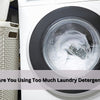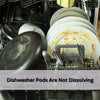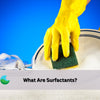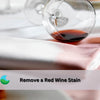Swedish Dishcloths vs. Kitchen Towels
- by Brodie Cook

When it comes to cleaning in the kitchen, most people grab sponges, paper towels, or dish towels. But have you thought about trying Swedish dishcloths? These clever eco-conscious cleaning tools are becoming a popular pick. If you want a better and more sustainable way to tidy up, this guide has all the info you need.
What Are Swedish Dishcloths?
Swedish dishcloths are made from 70% cellulose and 30% cotton, making them super absorbent and long-lasting. One dishcloth can replace up to 15 rolls of paper towels, reducing waste significantly. They dry quickly, preventing odour and bacteria buildup, and when worn out, they’re compostable!
The Materials Behind Kitchen Towels
Kitchen towels, also called tea towels, are made from a variety of fibres, each suited to different tasks.
Cotton is a common choice because it’s soft and absorbs water easily, making it handy for everyday use. Linen, on the other hand, is lightweight and dries fast, which makes it good for drying delicate items like glassware. Terry cloth is thicker and has a fluffy texture, so it can soak up a lot of liquid, but it takes longer to dry. Microfibre, made from synthetic fibre, is great for cleaning because it traps dirt and dust effectively. Each material has its own benefits, and having a mix in your kitchen means you’ll be prepared for any job.
Traditional Kitchen Towels: Pros & Cons
Kitchen towels are reusable and durable, making them a practical choice. However, they retain moisture longer, leading to odour and bacteria growth. While useful for drying dishes and hands, they aren’t as effective for large spills compared to Swedish dishcloths. Additionally, they are not biodegradable, unlike Swedish dishcloths, which can be composted at the end of their lifespan.
Swedish Dishcloths vs. Kitchen Towels: A Side-by-Side Comparison
| Feature | Swedish Dishcloths | Traditional Kitchen Towels |
|---|---|---|
| Best Function | Ideal for wiping surfaces and cleaning spills | Great for drying dishes and hands |
| Absorbency | Holds 15 times its weight | Varies by material |
| Drying Speed | Quick-drying, prevents odours | Slower drying, may develop a musty smell |
| Eco-Friendliness | Reusable, compostable, biodegradable | Reusable but not compostable |
| Versatility | Suitable for counters and delicate surfaces | Useful for drying, decoration, and handling hot items |
| Economic Factor | Replaces 15 rolls of paper towels; long-term savings | Durable but requires frequent washing |
| Durability | Lasts months with proper care | Can last years but holds bacteria |
| Ease of Cleaning | Machine washable or dishwasher safe | Machine washable |
Which One Should You Choose?
The choice depends on your needs. Traditional kitchen towels are best for drying hands and handling hot dishes, while Swedish dishcloths excel at absorbing spills, general cleaning, and reducing waste. Give it a try! Shop our Cleaner Cloth.
Make the Switch for a Greener Kitchen
Switching to Swedish dishcloths is an easy way to go green. They replace sponges and paper towels, so you use less and waste less. They’re long-lasting, save you money in the long run, and can even be composted when they wear out. If you want to make a small change that helps the planet, Swedish dishcloths are a great choice.

 Dishwashing
Dishwashing Laundry
Laundry Bundles
Bundles Surfaces
Surfaces Toilet
Toilet Handsoap
Handsoap Multi-Purpose
Multi-Purpose Floor
Floor



